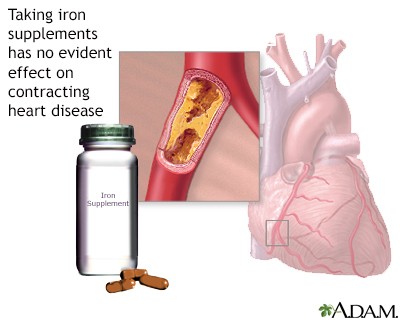Iron is a vital mineral that plays a crucial role in numerous bodily functions. It’s essential for the formation of hemoglobin, the protein in red blood cells that carries oxygen from the lungs to the body’s tissues. Because our bodies cannot produce iron, we must obtain it through our diet. This article will explore the best food sources of iron and how to maximize its absorption.
Why is Iron Important?
Iron is critical for:
- Oxygen Transport: Hemoglobin, which requires iron, carries oxygen throughout the body. Myoglobin, another iron-containing protein, stores oxygen in muscles.
- Energy Production: Iron is involved in energy production at the cellular level.
- Immune Function: Iron supports a healthy immune system.
- Cognitive Function: Iron is necessary for brain development and function.
Best Food Sources of Iron
Iron is found in two forms in food: heme and non-heme iron. Heme iron, found in animal products, is more easily absorbed by the body than non-heme iron, found in plant-based foods.
Heme Iron Sources:
- Lean Red Meat: Beef is an excellent source of heme iron.
- Poultry (Dark Meat): Dark meat chicken and turkey contain more iron than white meat.
- Seafood: Oysters, clams, scallops, tuna, salmon and other seafood are good sources of iron.
- Organ Meats: Liver, kidney, and other organ meats are very rich in iron, but should be consumed in moderation due to high cholesterol content.
- Eggs: Especially egg yolks.
Non-Heme Iron Sources:
- Legumes: Lentils, chickpeas, kidney beans, soybeans, and lima beans are all good sources.
- Dried Fruits: Apricots, raisins, and prunes.
- Nuts and Seeds: Almonds, cashews, pumpkin seeds, and sunflower seeds.
- Dark Leafy Green Vegetables: Spinach, kale, collard greens, and dandelion greens.
- Fortified Foods: Cereals, breads, and pastas are often fortified with iron.
- Whole Grains: Oats, brown rice, and quinoa.
- Broccoli: This cruciferous vegetable offers a decent amount of iron.
Maximizing Iron Absorption
The body does not absorb all the iron from the food we eat. Several factors influence iron absorption.
- Vitamin C: Consuming foods rich in vitamin C alongside iron-rich foods significantly increases non-heme iron absorption. Good sources of vitamin C include citrus fruits, strawberries, tomatoes, bell peppers, and broccoli.
- Meat, Fish, and Poultry: Adding a small amount of meat, fish, or poultry to a meal containing non-heme iron sources can enhance absorption.
- Cooking in a Cast-Iron Skillet: Cooking acidic foods like tomato sauce in a cast-iron skillet can increase the iron content of the food.
Foods That Inhibit Iron Absorption
Certain foods and beverages can hinder iron absorption:
- Tea and Coffee: Tannins in tea and coffee can bind to iron, reducing its absorption. Avoid drinking these beverages with meals.
- Calcium: High amounts of calcium can interfere with iron absorption. Limit calcium-rich foods or supplements during meals containing iron-rich foods.
- Phytates: Found in legumes, whole grains, and nuts, phytates can inhibit iron absorption. Soaking or sprouting these foods can reduce phytate content.
- Polyphenols: Found in some fruits, vegetables, and legumes, polyphenols can also inhibit iron absorption.
Iron Deficiency and Anemia
Iron deficiency is a common nutritional deficiency, particularly among women of childbearing age, pregnant women, infants, and young children. Prolonged iron deficiency can lead to iron deficiency anemia, characterized by a decreased number of red blood cells or a reduced concentration of hemoglobin in red blood cells.
Symptoms of iron deficiency anemia include:
- Fatigue
- Weakness
- Pale skin
- Shortness of breath
- Headaches
- Dizziness
- Brittle nails
- Cold hands and feet
- Pica (craving non-food substances like dirt or ice)
Recommended Daily Iron Intake
The recommended daily allowance (RDA) for iron varies depending on age, sex, and life stage:
- Infants (7-12 months): 11 mg
- Children (1-3 years): 7 mg
- Children (4-8 years): 10 mg
- Males (9-13 years): 8 mg
- Males (14-18 years): 11 mg
- Males (19+ years): 8 mg
- Females (9-13 years): 8 mg
- Females (14-18 years): 15 mg
- Females (19-50 years): 18 mg
- Females (51+ years): 8 mg
- Pregnant Women: 27 mg
- Lactating Women: 9-10 mg
Consult with a healthcare professional or registered dietitian to determine your individual iron needs.
Conclusion
Obtaining sufficient iron through diet is crucial for maintaining optimal health. By incorporating a variety of iron-rich foods into your meals and understanding how to maximize absorption, you can help prevent iron deficiency and support your overall well-being. If you suspect you may be iron deficient, consult with a healthcare provider for evaluation and guidance.

